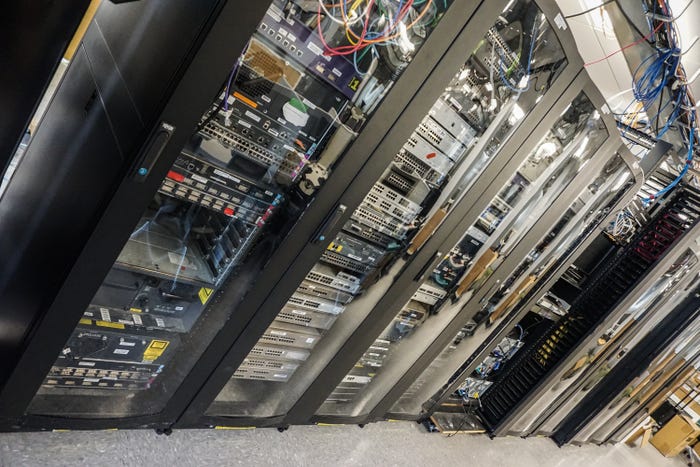UNH-IOL Launches 2.5 And 5 Gigabit Ethernet Testing
University lab will test products for conformance with new Ethernet specifications.
February 22, 2017

Aiming to accelerate the deployment of multi-gigabit Ethernet, the University of New Hampshire InterOperability Lab today unveiled testing services for 2.5 and 5 gigabit Ethernet products.
The independent UNH-IOL will provide electrical conformance and interoperability testing for products based on both the NBASE-T specification and the IEEE 802.3bz 2.5GBASE-T and 5GBASE-T standard. The new multi-gigabit Ethernet technologies are designed to enable networks to boost their speeds without needing to replace their existing Cat 5e and Cat 6 cables.
"By collaborating with the industry, the IOL has built the most varied interoperability test bed for two-and-a-half and five gig technologies," Michael Klempa, Ethernet and storage technical manager at UNH-IOL, told me in a phone interview. "This will accelerate deployment, allowing businesses to reap the benefits."
The testing will assure vendors that products based on NBASE-T and 802.3bz work together while enabling enterprises to adopt new wireless technologies without having to replace their cable infrastructure, he said. Increasing wireless speeds are the main drivers for 2.5G and 5G Ethernet, Klempa said, adding, "The point of the spec was to make sure the Ethernet link wasn't the bottleneck."

UNH-multigig.jpg
"By using this new technology, you're able to increase your throughput in the same scenario you have now because this technology leverages the same Cat5 infrastructure you have for 1 gig," Klempa said. "So by swapping out your ports to the two-and-a-half and 5 gig, you're able to get increased bandwidth and throughput with little up-front infrastructure costs."
The NBASE-T Alliance, a vendor organization that includes Cisco, drove the 2.5G and 5G Ethernet standardization effort. The idea is that adoption of 802.11ac Wave 2 wireless access points requires more than a 1 Gbps Ethernet link and using 10GbE would require an expensive cabling upgrade to Cat6E; 2.5 Gbps and 5 Gbps Ethernet ports allow use of existing cabling.
Published last fall, the IEEE 802.3bz standard took less than two years to complete.
Vendors released products based on the NBASE-T specification before the 802.3bz standard was finalized; the UNH-IOL's testing service will ensure interoperability between products based on the specification and the standard, Klempa said.
Last week, Dell'Oro Group said despite limited availability of products, market shipments of NBASE-T surged in the second half of 2016.
“We interpret these results as a reflection that enterprise users are hungry for multi-gigabit bandwidth to support the traffic from their wireless devices," Tam Dell'Oro, president of Dell'Oro Group, said in a prepared statement. "The confluence of widespread availability of NBASE-T Ethernet switches are now matching the widespread availability of 802.11ac Wave 2 wireless LAN products. Both go hand-in-hand to reduce frustration of mobile users in the enterprise."
The firm forecasts that NBASE-T port shipments will continue to surge this year, surpassing 5 million ports as merchant silicon-based switches come to market
Together with the NBASE-T Alliance and the Ethernet Alliance, the UNH-IOL hosted a plugfest to test 2.5 Gbps and 5 Gbps Ethernet technology last fall. Plans are under way for a second plugfest later this year.
"A lot of the interop testing we need to do is around the 100-meter bundle," Klempa said, explaining that it's the typical deployment.
About the Author
You May Also Like




